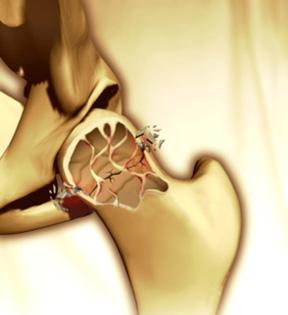
What is osteoporosis
Osteoporosis is a disease characterised by low bone mass and structural deterioration of bone tissue with a consequent increase in bone fragility and susceptibility to a fragility fracture.
Osteoporosis is a silent killer that has reached epidemic proportions. The National Osteoporotic Foundation of South Africa estimates that 1 in 2 women over the age of 50 and 1 in 5 men will sustain an osteoporosis related fracture. As longevity of the population increases, so will the incidence of osteoporosis and fragility fractures. This represents a massive burden of disease that is expected to double in the next 30 years due to our increasingly ageing population.
Osteoporosis is under-diagnosed and often under-treated. Worldwide, less than 2 in 10 patients with a fragility fracture will have a bone density scan and most will not be treated for osteoporosis. Secondary prevention of fractures is widely neglected. These fractures can dramatically change the quality of life for patients and their families due to a loss of patient independence, significant disability and even death.
The most common areas involved include the hip, spine and the wrist. The first fracture is a warning sign! It should result in immediate screening and, if indicated, management and treatment for osteoporosis.
What is a fragility fracture
A fragility fracture is a fracture that results from mechanical forces that would not cause a fracture in normal bone. The World Health Organization (WHO) has quantified this as forces equivalent to a fall from a standing height or less. Our bodies should be able to sustain a fall from this height without a fracture unless there is an underlying cause that makes the bones fragile. The commonest areas to be involved are spine, hips and wrist. Osteoporotic fragility fractures can cause substantial pain and severe disability, often leading to a reduced quality of life, and hip and vertebral fractures are associated with decreased life expectancy.

The most common test used to diagnose osteoporosis is Dual X-ray Absorptiometry, also called DXA or DEXA scan. It measures people’s spine, hip, or total body bone mineral density (BMD) to help gauge fracture risk. This scan is performed in an outpatient basis by the radiology department.
Blood tests are also often required in conjunction with bone density scanning.
Although osteoporosis can be treated, prevention is better than cure. Preventative measures aim to stimulate bone formation and to reduce bone loss. There are four main areas in which you can help maintain healthy bones:
• Balanced diet: rich in calcium and dairy products
• Regular exercise, preferably weight-bearing
• Stop smoking
• Avoid excessive alcohol consumption
Who is at risk of osteoporosis?
The following may suggest that you are at risk:
• Early menopause (before 45 years)
• Other causes of low sex hormone levels in men and women
• Long-term cortisone use
• Previous fracture after minimal trauma
• Alcohol or tobacco use
• Certain hormonal, intestinal or malignant disease
• Thin framed individuals with a strong family history of osteoporosis
• Malnutrition and poor calcium intake
Many individuals without identifiable risk factors may still develop osteoporosis.
Why is there a need for a multi-disciplinary approach?
There is strong scientific evidence to show that patients who sustain a fragility fracture and are treated in a multi-disciplinary team have better outcomes.
We offer a comprehensive, integrated approach to the diagnosis and management of osteoporosis, treatment of fragility fractures, rehabilitation and prevention of falls and further fractures under one roof. Our approach to treating patients with fragility fractures aims to improve the chance of returning to the level of activity enjoyed before the fracture in a shorter period of time and with fewer complications.
Our vision is to become a centre of excellence for the comprehensive management of osteoporosis and fragility fractures in South Africa using a multi-disciplinary approach.
